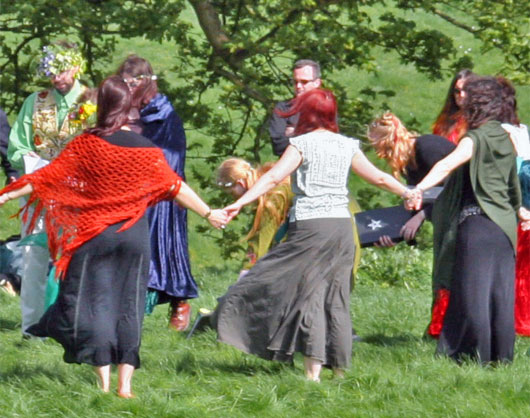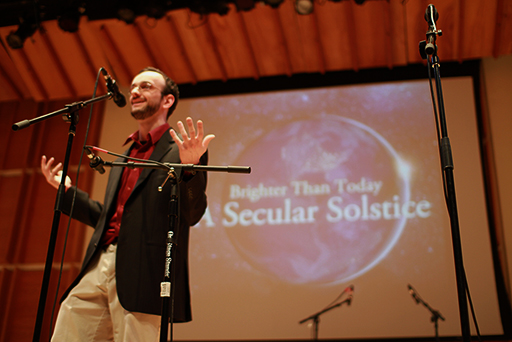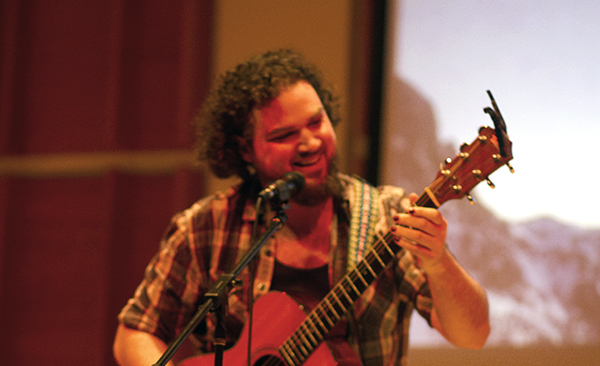So, what comes next after Winter Solstice? Summer Solstice? Equinoxes?
It’s a surprisingly complicated problem. There should clearly be more than one secular holiday. But four (following the Solstice/Equinox wheel of the year) feels like too many. So… three holidays? But how do you divide the year up in that case?
Sunday Assembly, the current rising-star-poster-child for non-theistic congregations, suggests an answer (originally invented by Korin Scott and some colleagues at SA-Portland).
Three Seasons
Sunday Assembly’s motto has three parts – “Live Better”, “Help Often”, and “Wonder More.” These do essentially sum up the things I think are important, and the things that I think guide most secular community-builders.
So, rather than dividing the year into seasons based on geography and climate (which are different all over the world), instead divide it into three seasons based on those three principles. And then, every four months, have a big holiday that transitions us from one season to the next.
This works out surprisingly well – “Live Better” comes on the heels of New Years, when everyone’s just made a bunch of resolutions they probably won’t actually keep. This seasons provides the focus of “help each other actually keep those resolutions”, and a general atmosphere of “let’s make our lives as awesome as possible.”
Then third-of-the-way-through-the-year, when our lives are going awesome, spring has come and we’re full of optimism and energy, we transition into helping others. Go out as a community and do projects that make the world a better place and help us feel excited and optimistic about it in the process.
Finally, as summer gives way to autumn and the world grows cold, we turn towards reflection about our wonder of the universe we live in.
There’s arguments to be made for switching that order around (“December is IRS-sponsored charity month, so why not have that be the ‘Help Often’ month?”). I think that’s a legitimate argument there, but I tentatively think it’s better to associate helping with the outdoors and good weather. (I’ll have another post at some point exploring this in more detail)
But Wait, There’s More
So we want three holidays highlighting each of these principles. Designing a holiday is not easy and I think it’s better to discuss the constraints of the problem before getting too much into specifics. But there’s one more rule of three that I think’d be relevant.
I think it’s best if each holiday is as thematically different from the others as possible. One way to divide them may be on the central conflict that the holiday represents. In literature, conflicts can be presented in three groups: “Man vs Man,” “Man vs Nature”, and “Man versus self.”
(Apologies for the sexist language – “Person vs Person” doesn’t sound quite as dramatic. I also plan to do a post about inherent problems with sexism in poetic language)
The Solstice already has a strong Humans-vs-Nature subtheme, which dovetails nicely with “Wonder of the universe” (the universe being awe-inspiring both in its beauty and in it’s cold indifference).
A “Live Better” holiday would focus on “Person vs Self”, contemplating your own shortcomings and working to change them, while also celebrating your individuality, your successes so far, and your potential for growth).
And when it comes to helping others, “People vs people” is clearly relevant. Many problems in the world exist either because humans compete for resources, or because humans cannot coordinate effectively to solve problems.
I don’t think these should be ironclad frameworks that guide the creation of new holidays, but I find they help point my brain in directions it would not have otherwise gone.











